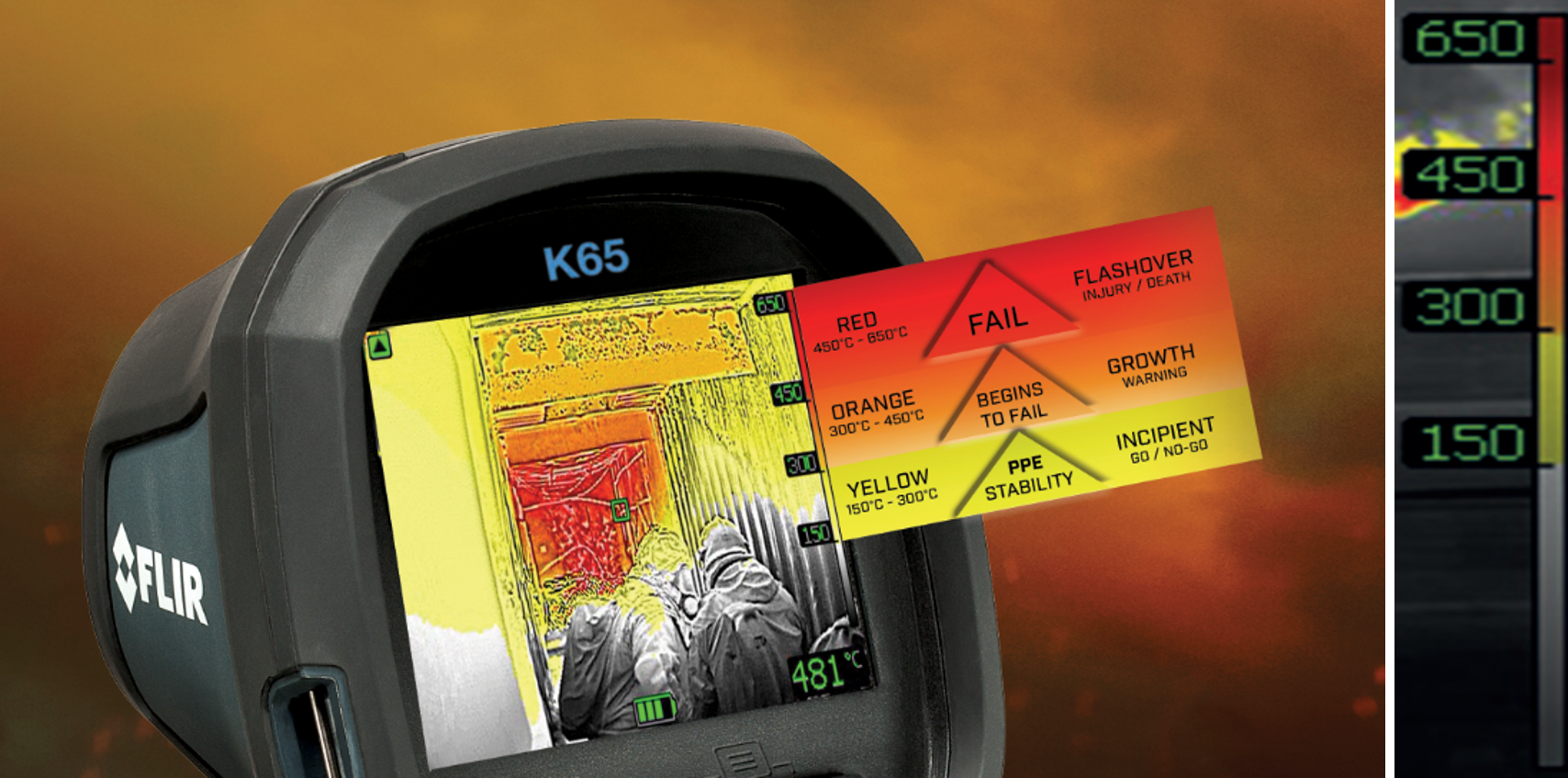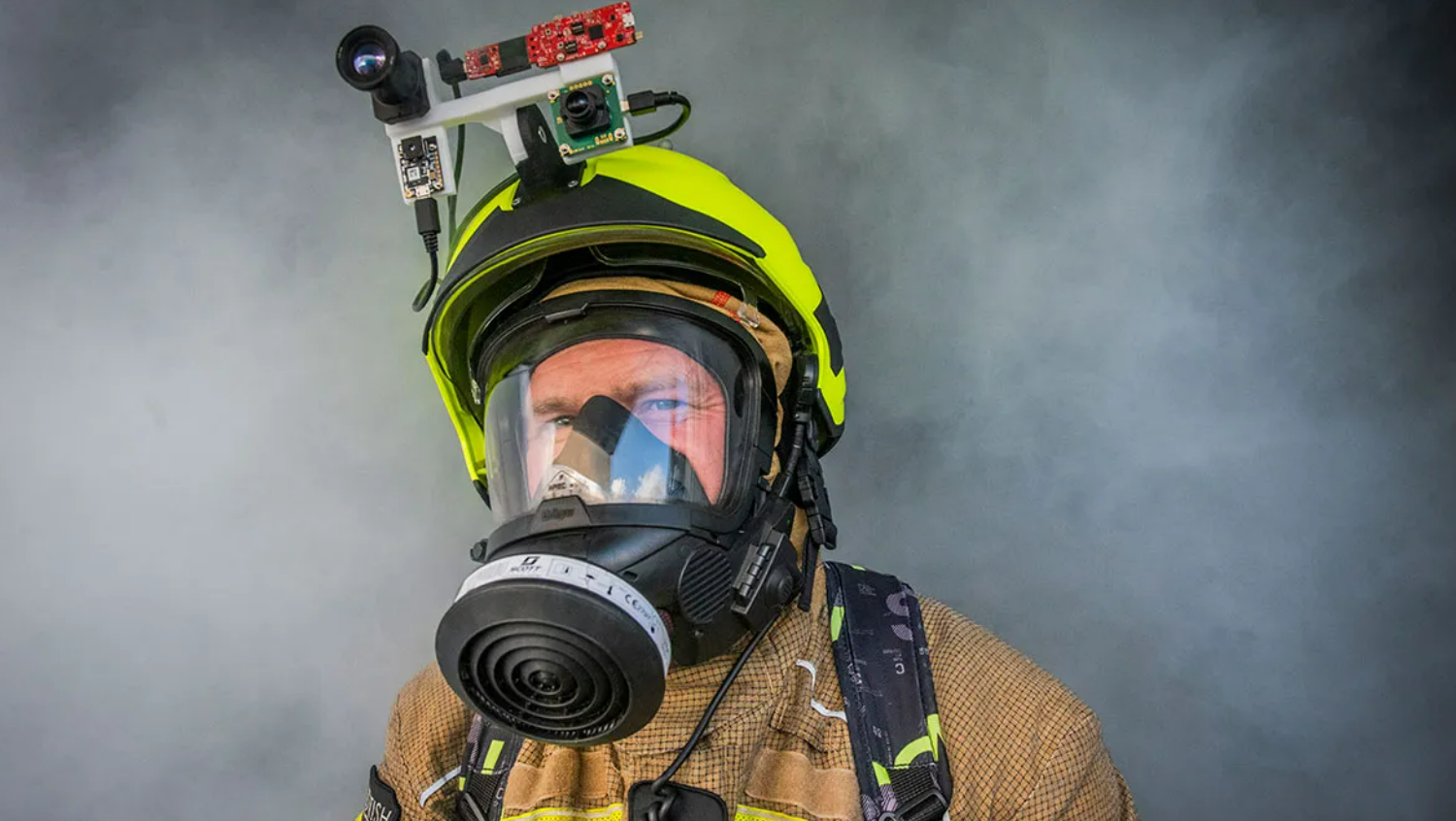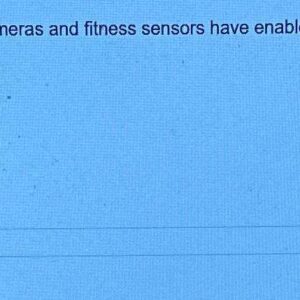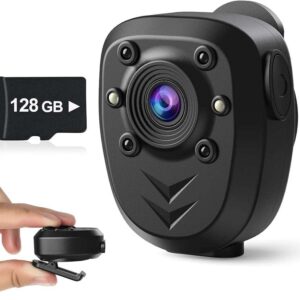Wearable Cameras for Firefighters are changing how emergency teams respond to dangerous situations. But can a small device attached to a helmet or uniform truly make a difference in life-threatening fires?
With rising demand for safety and accountability, fire departments worldwide are turning to this technology for real solutions. The answer is clear. AXON Body 3 provides live streaming to command centers, MOHOC Helmet Cameras are built to withstand heat and smoke, and GoPro Hero 12 delivers clear footage with rugged mounts.
These devices enhance situational awareness, improve training, and strengthen operational safety for frontline firefighters. Yet these are only a few examples, and experts like Dr. Gavin Horn from the Illinois Fire Service Institute emphasize how visual data transforms both safety protocols and firefighter education.
Curious to see which wearable cameras are shaping the future of firefighting? Let’s explore the top models, their features, and why they matter most in the heat of the action.
Introduction To Wearable Cameras
Wearable cameras have become a vital tool for firefighters. These devices capture crucial moments during emergencies. They help in training and improve safety. Firefighters use these cameras to see and better understand. This technology is changing how they work every day.
Purpose And Benefits
The main purpose of wearable cameras is to record real-time events. This helps in reviewing incidents later. Firefighters can learn from these recordings. It also helps in making better decisions in future emergencies.
There are many benefits to using wearable cameras:
- Improves safety by providing a clear view of the scene.
- Helps in training new firefighters.
- Assists in accurate incident reporting.
- Supports post-incident analysis.
These cameras offer a hands-free solution. Firefighters can focus on their tasks without distractions. They can also share real-time footage with their team. This enhances communication and coordination.
Historical Context
The idea of wearable cameras is not new. Early models were bulky and hard to use. Over the years, technology has improved. Today, wearable cameras are small and lightweight.
Initially, they were used in the military and law enforcement. Firefighters soon saw their potential benefits. Modern cameras now come with features like night vision and thermal imaging. These advancements make them even more useful in firefighting.
| Year | Development |
|---|---|
| 1980s | Wearable cameras are becoming smaller and lighter. |
| 1990s | Law enforcement adopts wearable cameras. |
| 2000s | Wearable cameras become smaller and lighter. |
| 2010s | Firefighters start using advanced models. |
Today, wearable cameras are an essential tool for firefighters. They provide a new perspective and enhance safety. The journey of wearable cameras shows how technology can save lives.

Credit: www.mdpi.com
Key Features Of Firefighter Cameras
Firefighters need reliable and robust tools. Wearable cameras are essential. These cameras capture critical moments. Let’s explore their key features.
Durability And Resilience
Firefighter cameras must withstand extreme conditions. They face intense heat, smoke, and water. Durability is a crucial feature.
- Heat resistance: Cameras work in high temperatures.
- Waterproof: They function in wet environments.
- Shockproof: Cameras survive drops and impacts.
The materials used in these cameras are top-notch. They ensure longevity and reliability.
High-definition Video
High-definition video is vital for firefighters. Clear footage helps in training and analysis. HD video captures every detail.
| Feature | Benefit |
|---|---|
| 1080p resolution | Clear, detailed footage. |
| Wide-angle lens | Captures more area. |
| Low-light performance | Sees in dark conditions. |
High-definition video aids in better decision making. It also helps in reviewing incidents later.
Safety Improvements
Wearable cameras are changing firefighter safety. These devices offer many benefits. Firefighters face dangerous situations. Wearable cameras can help keep them safe. Let’s explore two major benefits.
Real-time Monitoring
Real-time monitoring is a key feature. Command centers can see what firefighters see. This helps in making quick decisions. Firefighters get immediate help if needed. A quick response can save lives.
Command centers can track multiple firefighters. This ensures everyone is safe. It also helps in coordinating rescue efforts. Firefighters can focus on their tasks without worry.
Enhanced Situational Awareness
Enhanced situational awareness is another benefit. Firefighters can see obstacles clearly. They can avoid hazards easily. Wearable cameras provide a clear view of surroundings.
Firefighters can communicate better with their team. They can share what they see instantly. This improves teamwork and efficiency. Firefighters can handle emergencies better.
| Feature | Benefit |
|---|---|
| Real-Time Monitoring | Quick decisions, immediate help, coordinated efforts |
| Enhanced Situational Awareness | Clear view, better communication, improved teamwork |
Efficiency In Operations
Wearable cameras are transforming how firefighters operate. They offer improved efficiency in operations. These devices capture real-time footage. This footage helps in enhancing various aspects of firefighting tasks.
Streamlined Incident Reporting
Wearable cameras simplify incident reporting. Firefighters can record events as they happen. This footage provides accurate details. Written reports often miss these details. Video evidence is more reliable and precise.
This reduces the time spent on paperwork. Firefighters can focus more on their primary tasks. Accurate records also help in legal matters. They provide clear evidence in case of disputes.
Training And Review
Training and review processes benefit greatly. Wearable cameras record real-life scenarios. These recordings are valuable training materials. Trainees can learn from real incidents.
Reviewing footage helps in identifying mistakes. It also highlights areas for improvement. Experienced firefighters can provide better feedback. This leads to improved skills and safety.
A table summarizing the benefits:
| Benefits | Description |
|---|---|
| Accurate Incident Reports | Video evidence is precise and reliable. |
| Reduced Paperwork | Less time on documentation, more on primary tasks. |
| Improved Training | Real-life scenarios for better learning. |
| Enhanced Review | Identify mistakes and improve skills. |
Wearable cameras are changing the face of firefighting. They make operations more efficient and effective.
Technological Advancements
Wearable cameras for firefighters have seen remarkable technological advancements. These innovations enhance safety and efficiency. Modern features make a significant difference in firefighting operations.
Thermal Imaging Integration
One key advancement is the integration of thermal imaging. This technology allows firefighters to see through smoke and darkness. It helps locate trapped victims and identify hotspots. The cameras display heat signatures, making navigation easier.
Thermal imaging is crucial in low-visibility conditions. It reduces the risk and improves decision-making. Firefighters can now assess the situation quickly and accurately.
Augmented Reality Capabilities
Augmented reality (AR) is another groundbreaking feature. AR overlays critical information on the camera display. It provides real-time data about the environment.
- Building layouts
- Exit routes
- Hazardous areas
These details are vital for a firefighter’s safety. They ensure a coordinated and effective response. AR capabilities transform traditional firefighting methods, making operations smarter and safer.
| Feature | Benefit |
|---|---|
| Thermal Imaging | See through smoke and darkness |
| Augmented Reality | Overlay critical real-time data |
Case Studies
Wearable cameras are transforming firefighting. They provide real-time insights and enhance safety. Let’s explore some case studies that highlight their impact.
Successful Implementations
Several fire departments have adopted wearable cameras with great success. Here are a few examples:
| Fire Department | Implementation | Outcome |
|---|---|---|
| Los Angeles | Equipped all firefighters with cameras | Improved safety and response time |
| New York | Used cameras for training | Enhanced situational awareness |
| Chicago | Integrated cameras with command centers | Better incident management |
Lessons Learned
These implementations provided valuable lessons:
- Training is crucial: Firefighters need proper training to use cameras effectively.
- Data Management: Efficient systems are needed to handle large video data.
- Privacy Concerns: Addressing privacy issues is important to gain public trust.
By learning from these cases, other fire departments can better adopt wearable cameras.
Challenges And Considerations
Firefighters face many dangers every day. Wearable cameras can help them. But, they come with their own challenges and considerations. It is important to understand these before using them.
Privacy Concerns
One of the main challenges is privacy concerns. Firefighters often enter people’s homes. They may capture sensitive information on camera. This can be a big issue. People have a right to their privacy. Fire departments must address this issue carefully.
There are also concerns about the privacy of the firefighters. The cameras record their actions. This can feel intrusive. They need to feel safe and secure while doing their jobs.
A table can help explain the privacy concerns:
| Privacy Concern | Impact |
|---|---|
| Resident Privacy | Capturing sensitive information |
| Firefighter Privacy | Feeling of being watched |
Technical Limitations
Wearable cameras also have technical limitations. They need to work in harsh conditions. Firefighters deal with smoke, fire, and water. Cameras must be durable and reliable.
Battery life is another issue. Cameras need to last through long shifts. They should not fail in critical moments.
A list of common technical limitations:
- Battery life
- Durability
- Video quality
- Storage capacity
These technical issues must be addressed. This ensures the cameras are effective and reliable.

Credit: www.flir.co.uk
Future Trends
The world of wearable cameras for firefighters is evolving rapidly. New technologies promise enhanced safety and efficiency. This section explores the exciting future trends in this field.
Innovative Developments
Innovative developments are transforming wearable cameras. One key area is the use of thermal imaging. These cameras can see through smoke and darkness. Firefighters can navigate safely and locate victims quickly.
Another development is the integration of augmented reality (AR). AR overlays vital information on the camera display. Firefighters can see building layouts and hazard zones in real-time.
Artificial Intelligence (AI) is also making strides. AI can analyze footage and provide instant feedback. This technology can identify fire hotspots and predict structural collapses.
Potential Impacts
These innovations have significant potential impacts. Improved safety is the most important. Firefighters can avoid dangerous areas and find safe exit routes. This reduces the risk of injury and saves lives.
Enhanced efficiency is another benefit. Wearable cameras with AR and AI can speed up rescue operations. Firefighters can make quick, informed decisions. This leads to faster resolutions and less property damage.
Data collection is also a crucial impact. Wearable cameras can record incidents in detail. This footage is valuable for training and analysis. It helps improve future firefighting strategies.
| Innovative Development | Potential Impact |
|---|---|
| Thermal Imaging | Improved navigation and victim location |
| Augmented Reality (AR) | Real-time information overlay |
| Artificial Intelligence (AI) | Instant feedback and hazard prediction |
In summary, the future of wearable cameras for firefighters is bright. These technologies promise to make firefighting safer and more efficient.

Credit: www.iotworldtoday.com
Frequently Asked Questions
Can Firefighters Wear Body Cameras?
Yes, firefighters can wear body cameras. These devices help document incidents, enhance transparency, and improve training.
What Cameras Are Used By The Fire Department To See Through?
The fire department uses thermal imaging cameras to see through smoke and darkness. These cameras detect heat signatures, helping firefighters locate people and hot spots.
Why Do Firefighters Carry Infrared Cameras Into Smoky Buildings?
Firefighters carry infrared cameras into smoky buildings to see through smoke, locate victims, and identify hotspots quickly. This technology enhances their safety and efficiency during rescue operations.
Do Firefighters Have Thermal Cameras?
Yes, firefighters use thermal cameras. These devices help them locate victims, detect hotspots, and navigate through smoke.
Conclusion
Wearable cameras are revolutionizing firefighter safety and efficiency. These devices provide real-time data and enhance decision-making. As technology advances, wearable cameras will become even more vital in firefighting operations.
Adopting this technology can save lives, improve response times, and increase overall safety for firefighters.
Embrace the future of firefighting with wearable cameras.

A passionate tech blogger and the founder of Best Tech View, a dynamic platform dedicated to all things technology. With a keen interest in the tech, Ahmad strives to provide insightful and engaging content on the latest tech trends, and breakthroughs.


